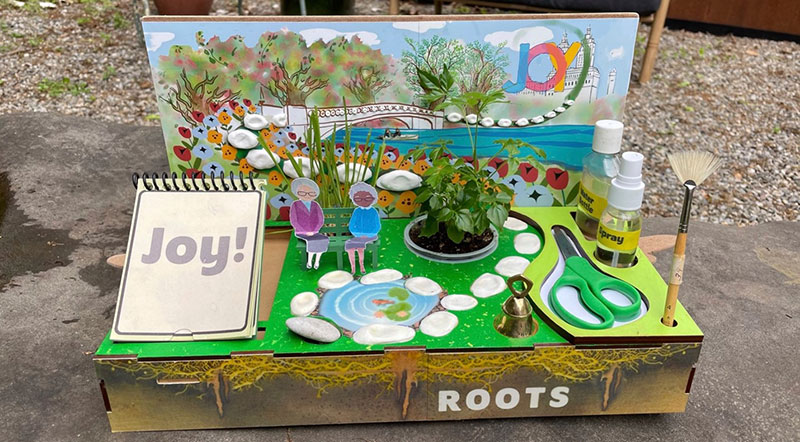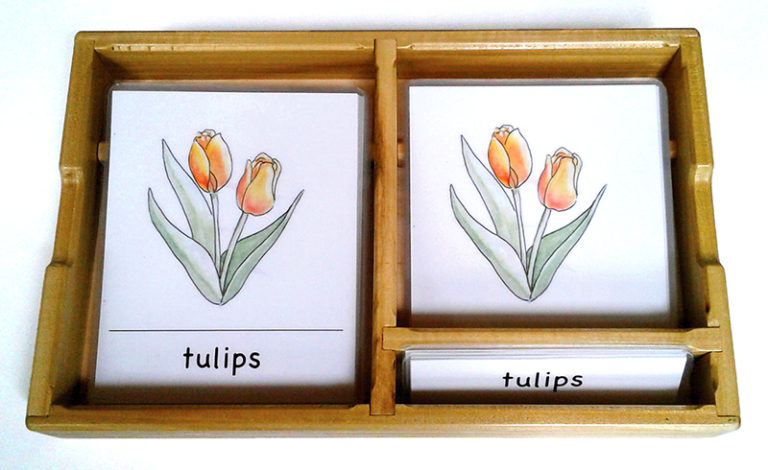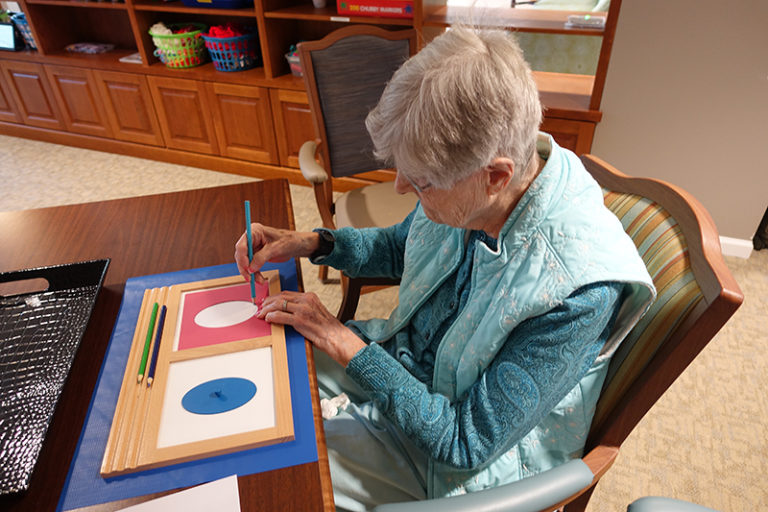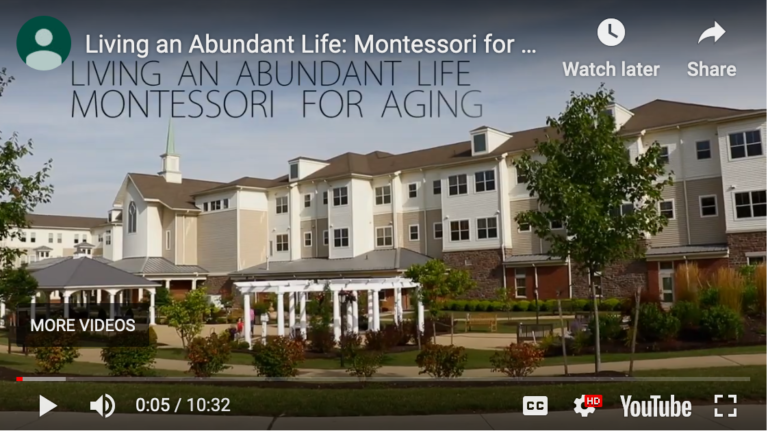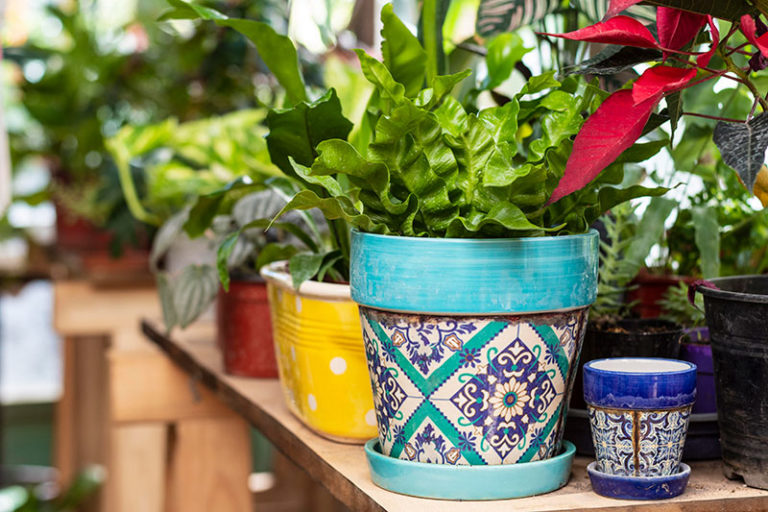Growing Mindfulness – Miniature Meditation Garden Incorporates Elements of Spaced Retrieval
By Fred Ellman
My intent in this short article is to give you a sense of how I’ve taken the incredible work of Jennifer Brush on the interpretation and usage of Spaced Retrieval Theory and incorporated it into real world usage in disciplines outside of the traditional ways of using SR Theory.
I work with and create Horticultural Therapy and Mindfulness activities for people living with dementia and their care partners. I am a graduate of the New York Botanical Gardens Horticultural Therapy Program. We are trained to utilize the joy, wonder, and restorative natural qualities that are elicited from the interaction with plants and adapt these into therapeutic modalities.
I am also a recent graduate of a two-year certificate program in what is called Buddhist Contemplative Psychotherapy focusing on Compassion and Mindful training from the Nalanda Institute in Manhattan.
The two disciplines are intrinsically linked through a focus on the “joy of the moment,” focusing on tangible momentary observations, and in a sense, meeting our moments where we are, and where they are. This, I have learned and experienced, is a practice that is inherently valuable to working with people living with dementia and their care partners.
Spaced Retrieval can be seen as a focus on the moment. It isn’t looking at what is lost. For me, it is a non-judgmental systematic inquiry in the present, having goals that are not linked to assembling a body of information. It’s a celebration of a present accomplishment. This is why it fits so well with Horticultural Therapy and Mindfulness activities for people living with dementia and their care partners. Spaced Retrieval can set up a rhythm for interaction. It has inherent ease of use so that a care-partner can use the guides as they are, or if they may expand on the prompts given to connect in an even more personal way.
Using these fundamentals, I created a reproducible miniature meditation garden I call “The Flying Garden of Compassion.” The multi-sensory garden is designed to be used for in-person interaction as well as connecting with a zoom based stand-alone 4-week program. My intention was to extend the flat screen of a computer during a zoom session to a tabletop “world of wonder”.
The four weeks of the program are guided by four spiral booklets focusing on Joy, Kindness, Compassion, and Calm. These correlate with four “immeasurables” from Buddhist teachings.
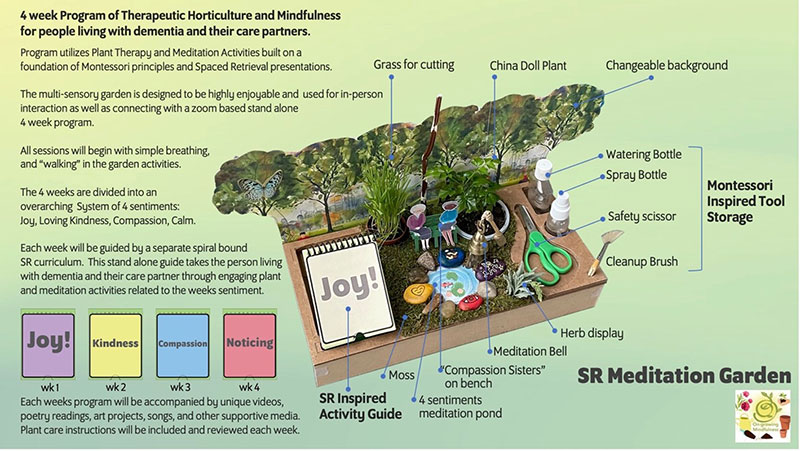
The garden is divided into three zones:
- Left Zone: This is a spiral bound booklet that has continuous prompts and simple directives.
- Center Zone: This is the garden itself with plantings, pathways, a meditation bell, and two paper cut-outs of women who are sitting on a bench. I call them the “Compassion Sisters”.
- Right Zone: This is the tool storage. This area is influenced by Montessori principles of preparing the environment for success.
I view the entirety of the three zones as a prepared environment of horticultural and mindfulness activities for the person living with dementia and their care partners.
An example of a Spaced Retrieval prompt on the spiral bound page is the name of the plant. In this case, the common name for the provided plant is called “China Doll”. It creates a satisfying moment for the person living with dementia to build a recall of the plant. Over the course of a session, this may take several repetitions of the name, and it may not be recalled at all. Regardless, it is simple focal point that has built in error-correction in the booklet.
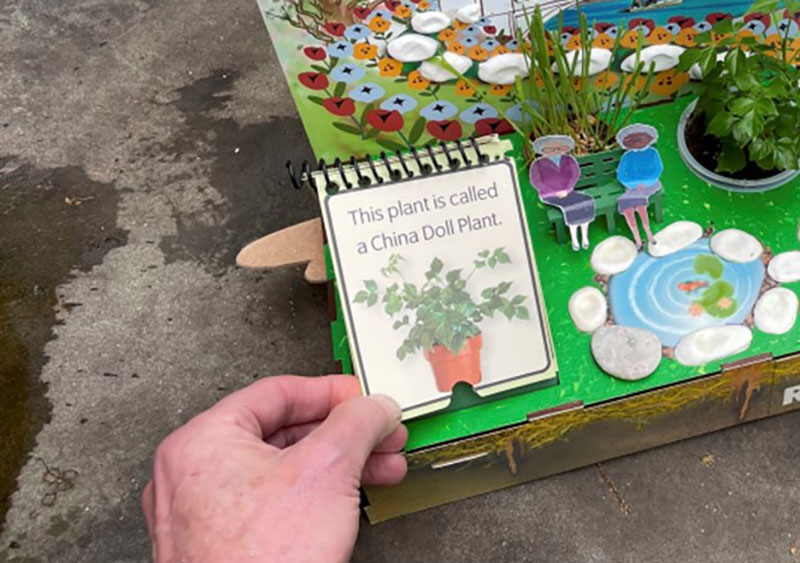
Additional SR prompts name the tools, such as the scissor, the water bottle, the sprayer, and make simple inquiries as to their names, how to use them and where to replace them for storage. The intent is two-fold:
- To set up a visually accessible system for the person living with dementia.
- To ease the anxiety of the care-partner by having everything they need in front of them.
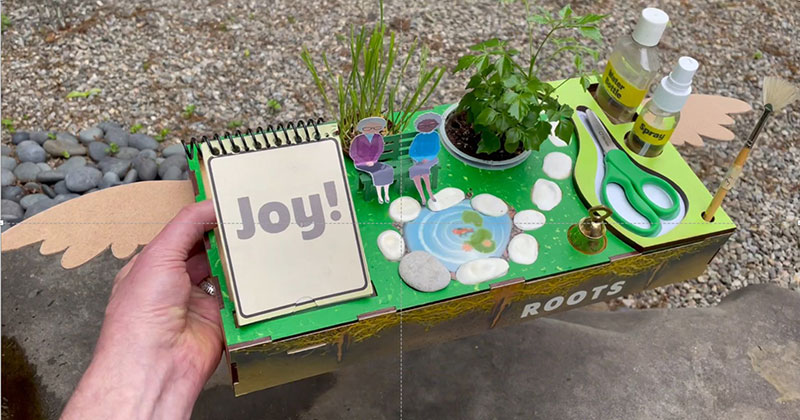
Each week also uses the theme, for example, “Joy”, to develop SR guided moments of search and recall. These moments are connected to the Horticultural engagement inherent in the care of the living plants. It is in these moments that we focus on the actual botanical features and wonder of a living entity in front of us.
The garden has wings that pull out. This is to assist it in “flying”. The backdrops are coordinated with the week’s themes, and at the end of a session, we pick up our gardens and imagine we are flying to the next land, such as Kindness, Compassion, or Calm. This is a favorite playful moment and attempts to utilize the capacity for imagination within a person living with dementia.
I use multi-media to enhance and connect the elements of the garden. These media enhancements include meditation videos with the Compassion Sisters, poetry readings, music and singing, as well as other media that can easily be conveyed over Zoom.
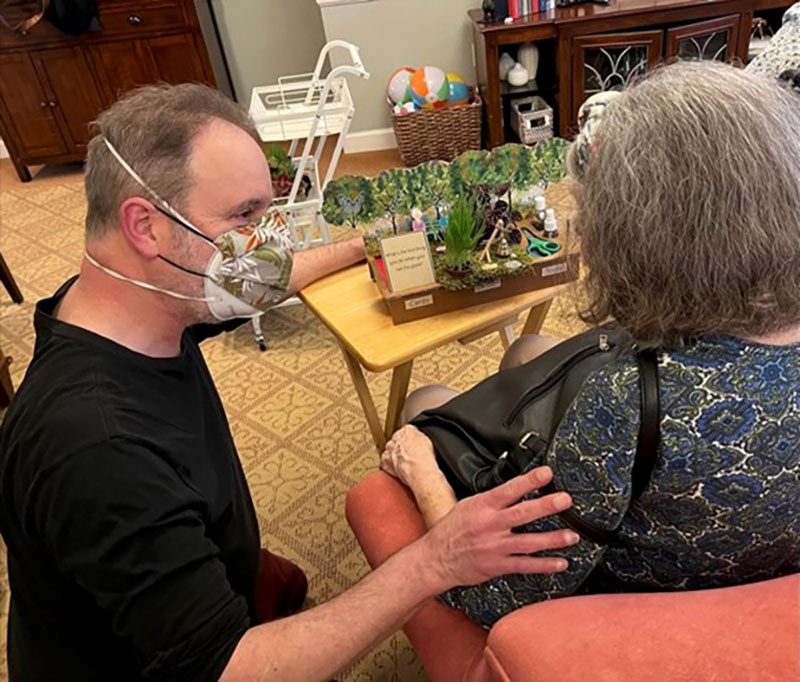
As in all interactions with people living with dementia, tone of voice, eye contact, (even over Zoom), emotional regulation and more, are key to connection and enjoyment. This is important to remember when a plant needs emergency care and the session has to be paused to remedy the situation.
I hope this gives you a taste of what I have intended with Spaced Retrieval and “The Flying Garden of Meditation”. The garden is constantly “growing” and learning.

